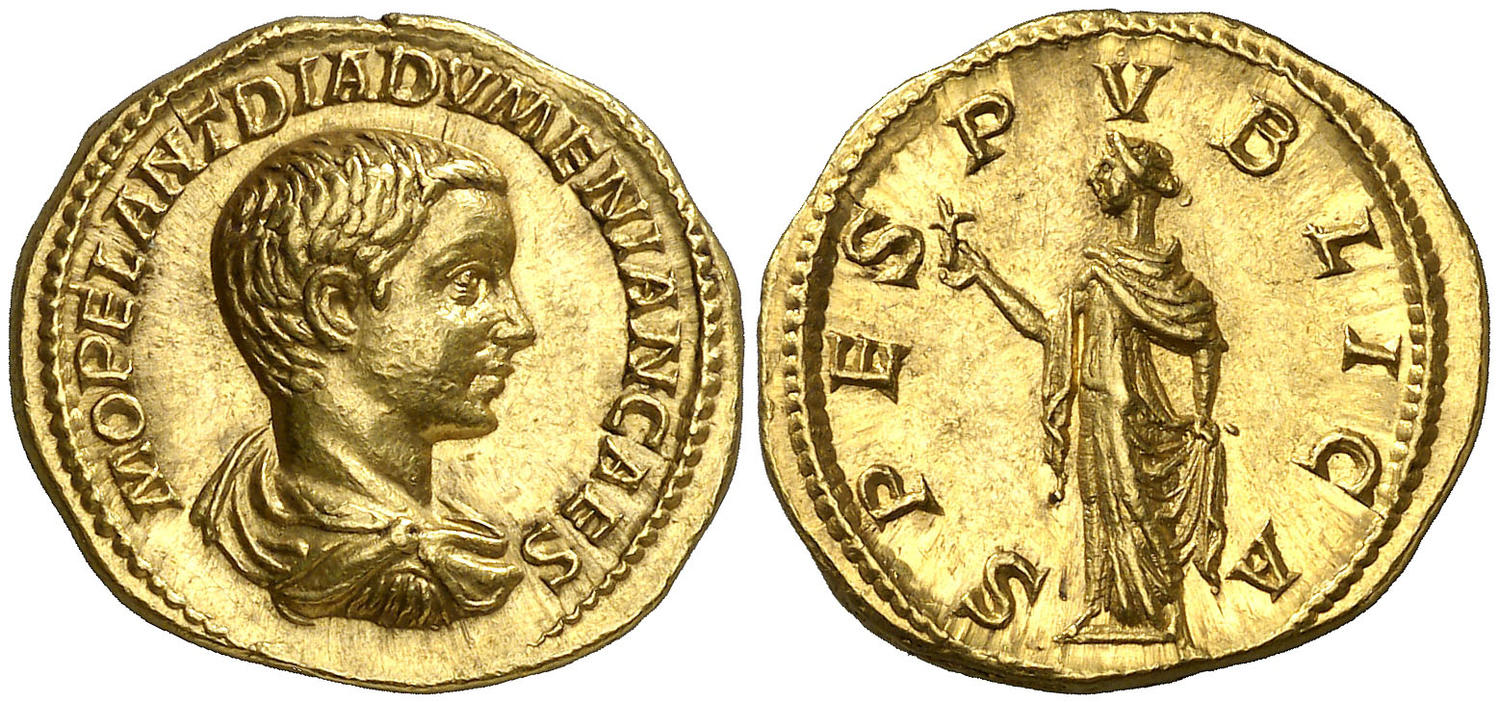Detail mince: Diadumenian Caesar, 218 extremely rare aureus

Diadumenian Caesar, 218 extremely rare aureus
Aureus (Gold, 7.35 g 12), Rome, March-June 218.
Obverse: M OPEL ANT DIADVMENIAN CAES Bare-headed, draped and cuirassed bust of Diadumenian to right.
Reverse: SPES PVBLICA Spes standing left, holding flower in her right hand and raising her skirt with her left hand.
Rarity: Extremely rare.
References: Biaggi 1281 (same dies). BMC 94 note (this coin). C. 22. Clay Issue 3. Du Chastel 729 (from the Karnak Hoard). RIC 115 (this coin). Sear II 7445 (same dies).
Condition: Beautifully toned and with a lovely portrait in high relief. Good extremely fine.
Provenance: From the collections of P.A. Doheny, Sotheby Parke Bernet, 20 June 1979, 131 (illustrated in a color enlargement as the frontispiece), E. von Schulthess, Hess-Leu 17, 23 March 1961, 282, "R.P.", Monnaies et Médailles XII, 13 June 1953, 840, J.P. Morgan, W. Raymond, The J. Pierpont Morgan Collection (New York, 1953), 160, and Consul E.F. Weber, Hirsch XXIV, 10 May 1909, 1964, and probably from the Karnak Hoard of 1901.
Note: Diadumenian was only 9 when he was made Caesar by his father Macrinus, and spent the rest of his life traveling with him. When the revolt of Elagabalus began Macrinus made Diadumenian Augustus, probably as an excuse for a donative to the troo1 to ensure their loyalty, but even though the army took the money, they also went over to Elagabalus! Diadumenian attempted to flee to the Parthians but he was captured and executed before he could reach them. All of the Imperial coinage of Macrinus and Diadumenian was struck in Rome, and since neither of them ever returned to Rome during their reign the portraits used must have been made by artists in the East and sent back to be used as models by the die cutters. This bust of Diadumenian is particularly delicate and attractive.
If interested, please contact us at
info@numfil.com

